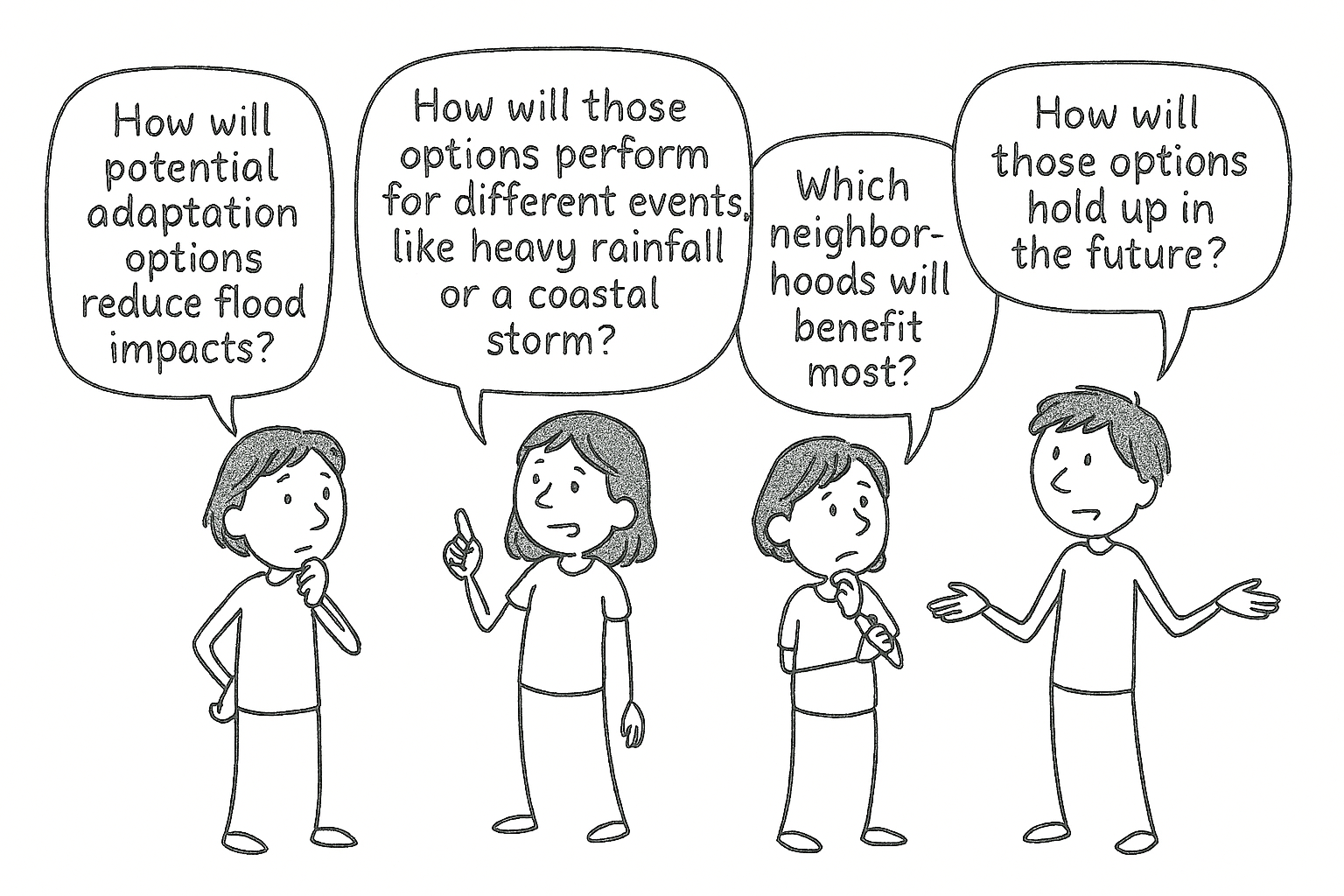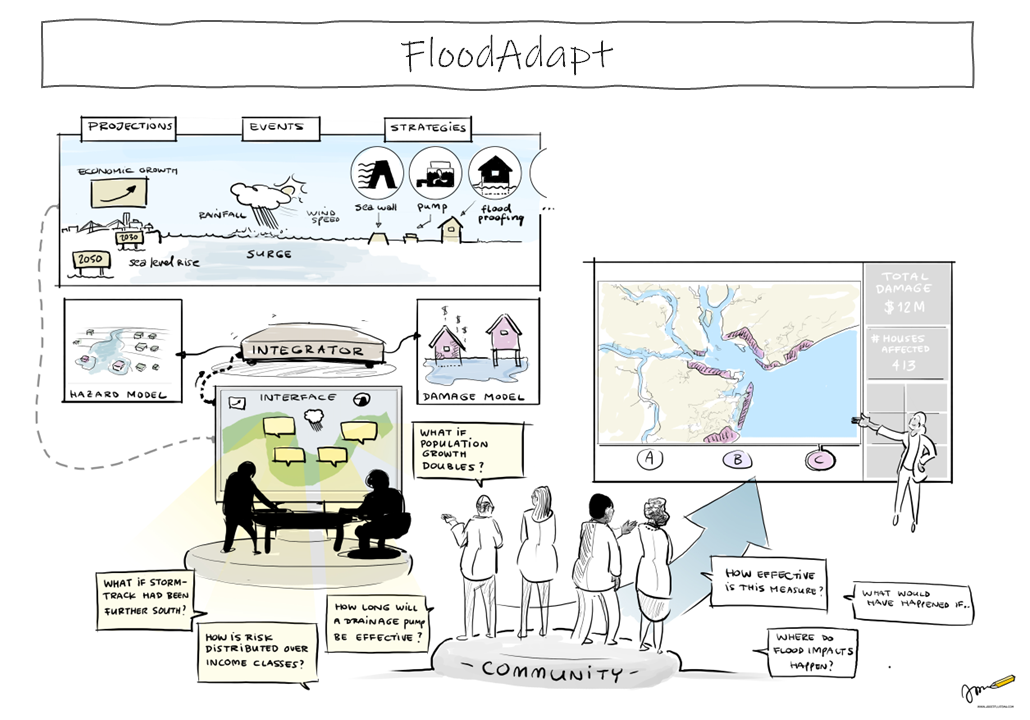Introduction
Welcome to the FloodAdapt documentation! This introduction will help you get oriented with FloodAdapt and learn how to use this guide effectively. It includes:
- An introduction video
- An overview of FloodAdapt
- Information about FloodAdapt’s intended uses
- Reader guidance to help you navigate the rest of the documentation.
Overview
FloodAdapt is an interactive decision-support tool which aims to accelerate and improve flood adaptation planning. It connects users to powerful modeling tools through an intuitive graphical interface, enabling the creation, simulation, and comparison of flooding and impact scenarios without requiring modeling expertise. Built with community-level planning needs in mind, FloodAdapt supports meaningful stakeholder engagement and helps translate scientific advances into actionable insights.
FloodAdapt allows users to specify and simulate what-if scenarios that combine weather events (historical or synthetic), climate or socio-economic future projections, and adaptation strategies. These scenarios can include hurricanes, coastal storms, high tides, rainfall events, and heavy river discharges, along with future projections such as sea level rise, increased storm frequency, and urban growth. Users can explore a wide range of adaptation options - from levees, pumps, and sea walls to green infrastructure, building elevations, buyouts, and floodproofing - and evaluate their effectiveness in reducing flood impacts.
FloodAdapt is essentially a smart shell that prepares, runs, and post-processes simulations using two open-source tools: the process-based compound flood modeling software SFINCS and the flood impact assessment tool Delft-FIAT. SFINCS simulates flooding from rainfall, tide, storm surge, and river discharge, while Delft-FIAT estimates damages to buildings, roads, and other assets, and aggregates them spatially or by other specified attributes (such as social vulnerability or income level). FloodAdapt does not come pre-loaded with baseline SFINCS and Delft-FIAT models; these need to be set up for a new location as part of system setup. The accuracy of FloodAdapt outputs will depend on the quality of the baseline SFINCS and Delft-FIAT models for a given location.
When a user specifies a what-if scenario, FloodAdapt automatically makes changes to the baseline SFINCS and Delft-FIAT models to represent the user choices, the way an expert modeler would. It then simulates the scenario and returns flood and impact maps, scenario comparison visualizations, summary metrics, and an infographic. In this way, FloodAdapt allows end-users to unleash the power of advanced models without requiring a modeling background, or the laborious pre- and post-processing of models that is usually required for this type of analysis.
Intended Uses of FloodAdapt
FloodAdapt was developed to support adaptation and resilience planning, to provide community understanding of the flooding and impacts resulting from different scenarios of interest, to understand the urgency of actions in different areas, to aid in prioritizing investments, and to assess the effectiveness, benefits, and longevity of different adaptation options.
FloodAdapt is not intended for use in the detailed engineering design of adaptation measures, particularly hydraulic ones. Once FloodAdapt has helped the community identify strategies and priority areas for improvements, the specific design requirements for these strategies should be done using more comprehensive modeling tools available. These may need to include detailed drainage infrastructure systems, groundwater, or other components not currently built into FloodAdapt.
Reader Guidance
The FloodAdapt documentation is separated into four sections:
User Guide The user guide provides information on how to get started with FloodAdapt, and describes how to use all the FloodAdapt functionalities. This guide is intended for FloodAdapt users.
Technical background - The technical docs provide detailed information on the calculation methods within FloodAdapt. This is intended for technically-minded users who want to better understand what is happening under the hood.
API documentation - The API documentation is intended for users who would like to directly use the backend of FloodAdapt, bypassing the graphical user interface. This documentation explains the API functions and provides example notebooks demonstrating API usage.
Setup Guide - The setup guide is intended for more technical users who will be setting up FloodAdapt in a new location.

